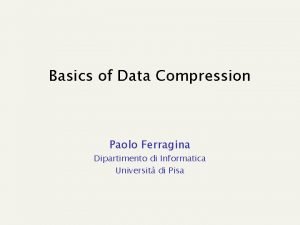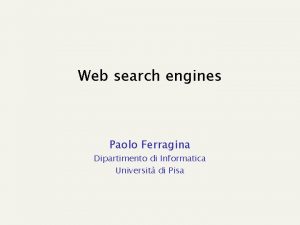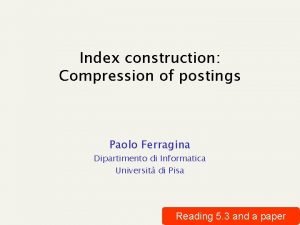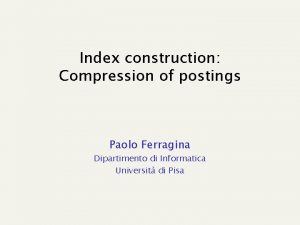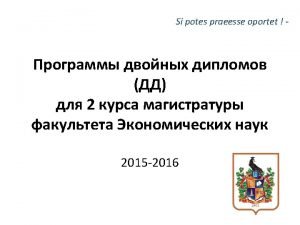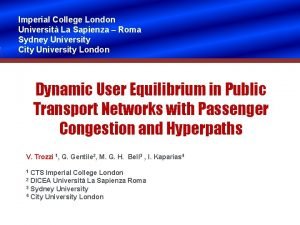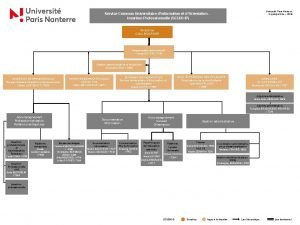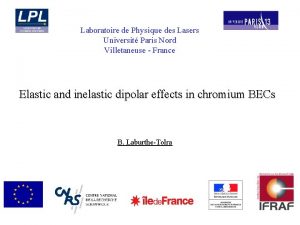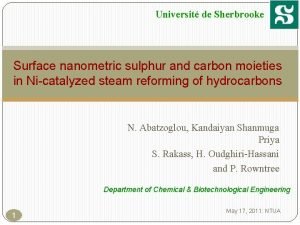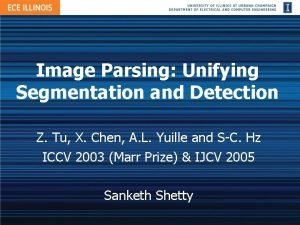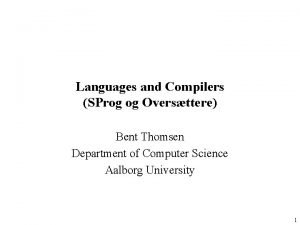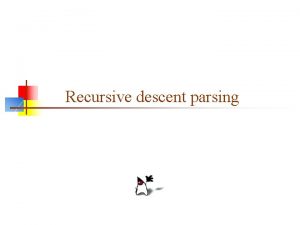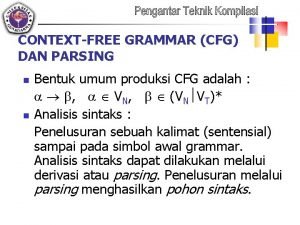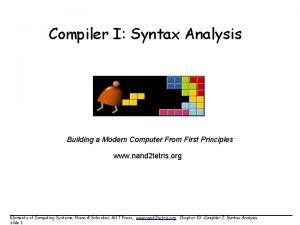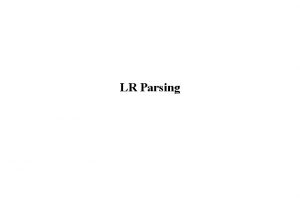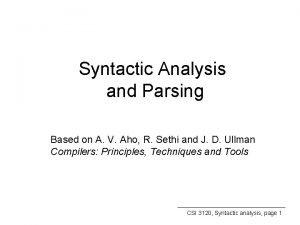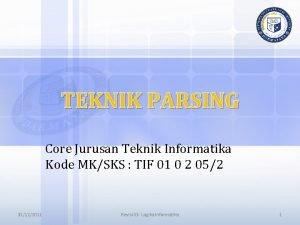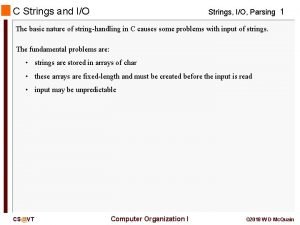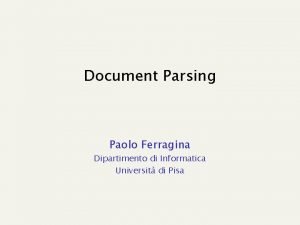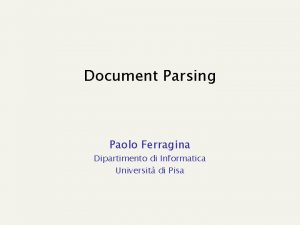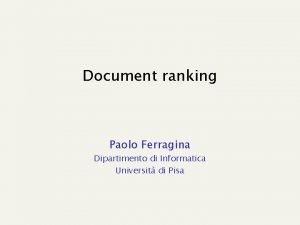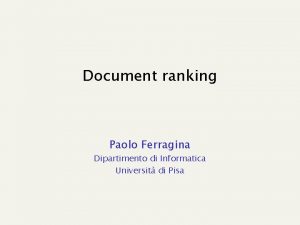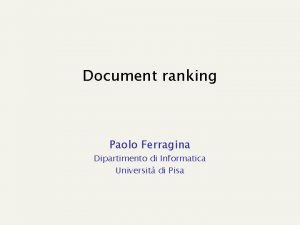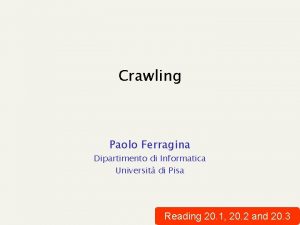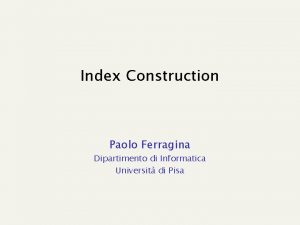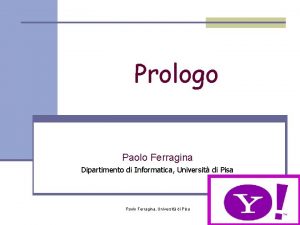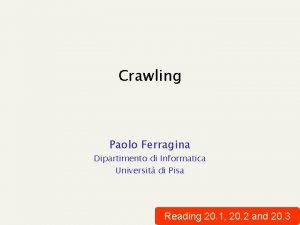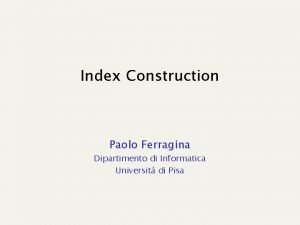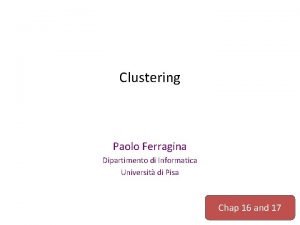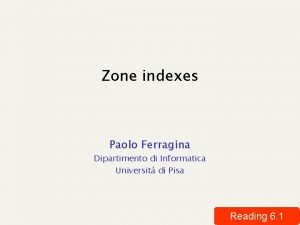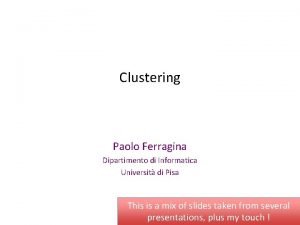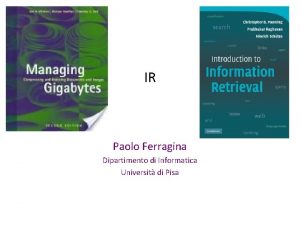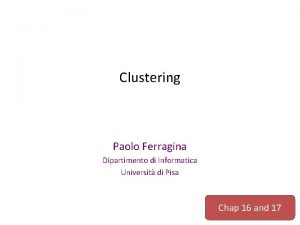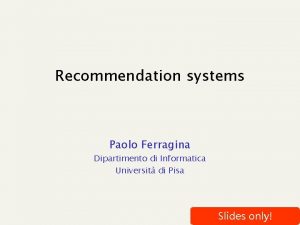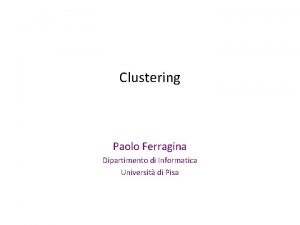Document Parsing Paolo Ferragina Dipartimento di Informatica Universit



















- Slides: 19

Document Parsing Paolo Ferragina Dipartimento di Informatica Università di Pisa

Sec. 1. 2 Inverted index construction Documents to be indexed. Friends, Romans, countrymen. Tokenizer Token stream. Friends Romans Countrymen roman countryman Linguistic modules Modified tokens. friend Indexer Inverted index. friend 2 4 roman 1 2 countryman 13 16

Parsing a document n What format is it in? n n n pdf/word/excel/html? What language is it in? What character set is in use? Each of these is a classification problem. But these tasks are often done heuristically …

Tokenization n n Input: “Friends, Romans and Countrymen” Output: Tokens n Friends n Romans n Countrymen A token is an instance of a sequence of characters Each such token is now a candidate for an index entry, after further processing But what are valid tokens to emit?

Tokenization: terms and numbers n Issues in tokenization: n Barack Obama: one token or two? n San Francisco? n Hewlett-Packard: one token or two? n B-52, C++, C# n Numbers ? 24 -5 -2010 n 192. 168. 0. 1 n Lebensversicherungsgesellschaftsange stellter == life insurance company employee in german!

Stop words n We exclude from the dictionary the most common words (called, stopwords). Intuition: n n n They have little semantic content: the, a, and, to, be There a lot of them: ~30% of postings for top 30 words But the trend is away from doing this: n n n Good compression techniques (lecture!!) means the space for including stopwords in a system is very small Good query optimization techniques (lecture!!) mean you pay little at query time for including stop words. You need them for phrase queries or titles. E. g. , “As we may think”

Normalization to terms n n We need to “normalize” terms in indexed text and query words into the same form n We want to match U. S. A. and USA We most commonly implicitly define equivalence classes of terms by, e. g. , n deleting periods to form a term n n deleting hyphens to form a term n n U. S. A. , USA anti-discriminatory, antidiscriminatory C. A. T. cat ?

Case folding n Reduce all letters to lower case n exception: upper case in midsentence? n n e. g. , General Motors SAIL vs. sail Bush vs. bush Often best to lower case everything, since users will use lowercase regardless of ‘correct’ capitalization…

Thesauri n Do we handle synonyms and homonyms? n E. g. , by hand-constructed equivalence classes n n color = colour We can rewrite to form equivalence-class terms n n car = automobile When the document contains automobile, index it under car-automobile (and vice-versa) Or we can expand a query n When the query contains automobile, look under car as well

Stemming n n Porter’s algorithm Reduce terms to their “roots” before indexing “Stemming” suggest crude affix chopping n n language dependent e. g. , automate(s), automatic, automation all reduced to automat. for example compressed and compression are both accepted as equivalent to compress. for exampl compress and compress ar both accept as equival to compress

Lemmatization n Reduce inflectional/variant forms to base form E. g. , n am, are, is be n car, cars, car's, cars' car Lemmatization implies doing “proper” reduction to dictionary headword form

Sec. 2. 2. 4 Language-specificity n Many of the above features embody transformations that are n n Language-specific and Often, application-specific These are “plug-in” addenda to indexing Both open source and commercial plug-ins are available for handling these

Statistical properties of text Paolo Ferragina Dipartimento di Informatica Università di Pisa

Statistical properties of texts n n Tokens are not distributed uniformly. They follow the so called “Zipf Law” n Few tokens are very frequent n A middle sized set has medium frequency n Many are rare The first 100 tokens sum up to 50% of the text, and many of them are stopwords

An example of “Zipf curve”

A log-log plot for a Zipf’s curve

The Zipf Law, in detail n n k-th most frequent token has frequency f(k) approximately 1/k; Equivalently, the product of the frequency f(k) of a token and its rank k is a constant k * f(k) = c / k s s = 1. 5 2. 0 General Law n Scale invariant: f(b*k) = b-s * f(k)

Distribution vs Cumulative distr Log-log plot Power-law with smaller exponent Sum after the k-th element is ≤ f(k) * k/(s-1) Sum up to the k-th element is ≥ f(k) * k

Other statistical properties of texts n The number of distinct tokens grows as n n n The so called “Heaps Law” (nb where b<1, tipically 0. 5, where n is the total number of tokens) The average token length grows as (log n) Interesting words are the ones with medium frequency (Luhn)
 Paolo ferragina
Paolo ferragina Crawling informatica
Crawling informatica Paolo ferragina
Paolo ferragina Paolo ferragina
Paolo ferragina Erasmus universit
Erasmus universit London universit
London universit Scuio ip nanterre
Scuio ip nanterre Universit
Universit Universit sherbrooke
Universit sherbrooke Javascript document.write(document.cookie)
Javascript document.write(document.cookie) Image parsing
Image parsing Dfa
Dfa Recursive descent parser
Recursive descent parser Contoh parsing
Contoh parsing Yichao zhou
Yichao zhou The lexical analysis for a modern computer
The lexical analysis for a modern computer Which parser is powerful
Which parser is powerful Lr(0) parsing table
Lr(0) parsing table Teknik parsing logika informatika
Teknik parsing logika informatika Fgets strtok
Fgets strtok
